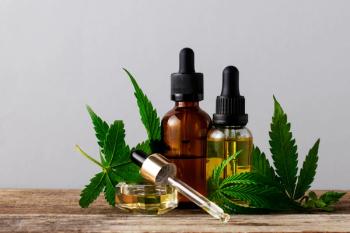
Study Demonstrates Novel Passive Sampling Using Silicone Wristbands
Silicone wristbands promoting charitable organizations and which are popular throughout the world as a fashion statement can be used to monitor exposure of individuals to contaminants in their local environment, according to a study published in the journal Environmental Science and Technology.1 The authors of the study propose silicone bands as passive samplers that can give a temporal and spatial picture of human contaminant exposure.
Silicone wristbands promoting charitable organizations and which are popular throughout the world as a fashion statement can be used to monitor exposure of individuals to contaminants in their local environment, according to a study published in the journal Environmental Science and Technology.1 The authors of the study propose silicone bands as passive samplers that can give a temporal and spatial picture of human contaminant exposure.
People are exposed to uncountable contaminants in their everyday life, both natural and synthetic. Making connections between contaminant exposure and the onset of disease is therefore challenging, as there can be multiple contaminants identified within one workplace environment, not to mention in the home. Scientists can use passive sampling that involves recruits carrying a sampler, such as a backpack, during their day-to-day life.
Silicone has already been demonstrated as an effective passive sampling device (PSD) because it is known to absorb a wide range of compounds. The Column has previously reported the use of explanted silicon prostheses for the biomonitoring of persistent organic pollutants (POPs) in humans.2
In this study the wristbands were thoroughly cleaned and sterilized, with two bands from each batch assessed for contamination. Participants were then given either one or two bands to wear continuously for a period of 30 days before returning the bands for analysis. The bands were extracted, and the resulting samples screened for 1182 chemicals using gas chromatography–mass spectrometry (GC–MS). The study was able to identify 49 different compounds, including polycyclic aromatic hydrocarbons (PAHs) or industrial compounds (pesticides, flame retardants, and plasticizers). Diethyl phthalate and tonalide, which are both found in personal care products, were the most commonly found.
As a proof of concept, bands were also given to eight roofers using hot asphalt to quantitate PAH exposure, a known risk in this job type, for a period of either eight or 40 h. In addition to 12 known PAHs, two unknown PAHs were also identified, benzofluornenone and fluorenone.
Co-author Kim A. Anderson said: “We can screen for over 1000 chemicals that may accumulate in the wristbands. Currently, PAHs, pesticides, flame retardants, PCBs, industrial chemicals, and consumer and pharmaceutical products have been quantified in wristbands.” The novel application of silicone wristbands is an interesting one as they are non‑invasive, cheap, and effective at monitoring contaminant exposure.
References
1. Steven G. O’Connell et al., Environmental Science and Technology doi.org/10.1021/es405022f (2014).
2. The Column9(19), 6 (2013), http://www.chromatographyonline.com/lcgc/article/articleDetail.
jsp?id=827233&sk=d3ffb9c9fc058ee025de5bc1ba8e2931
Newsletter
Join the global community of analytical scientists who trust LCGC for insights on the latest techniques, trends, and expert solutions in chromatography.




